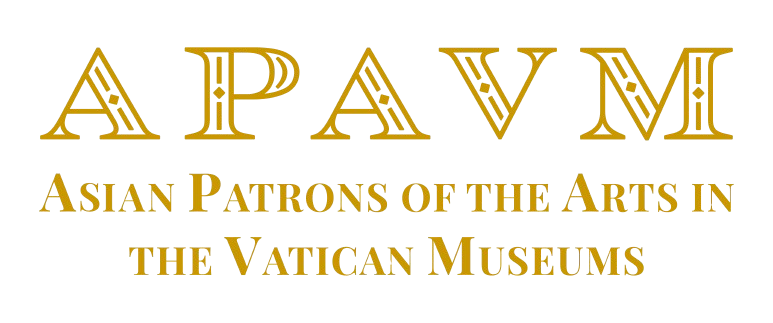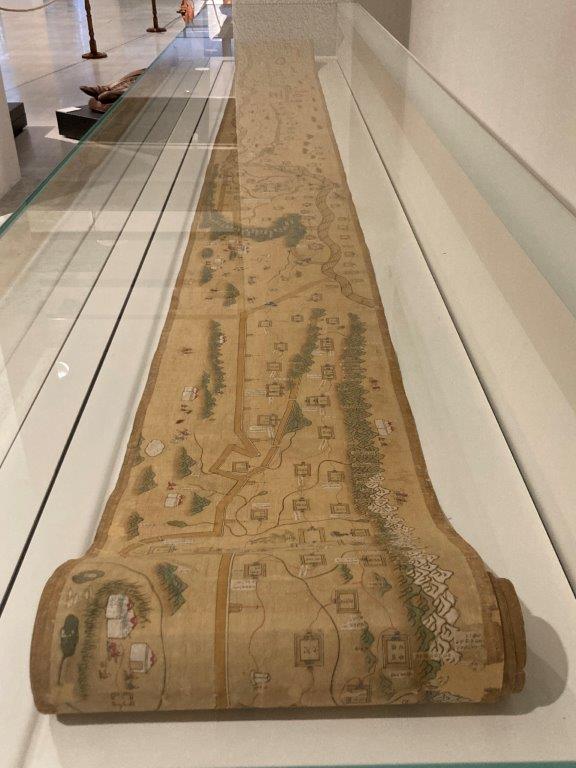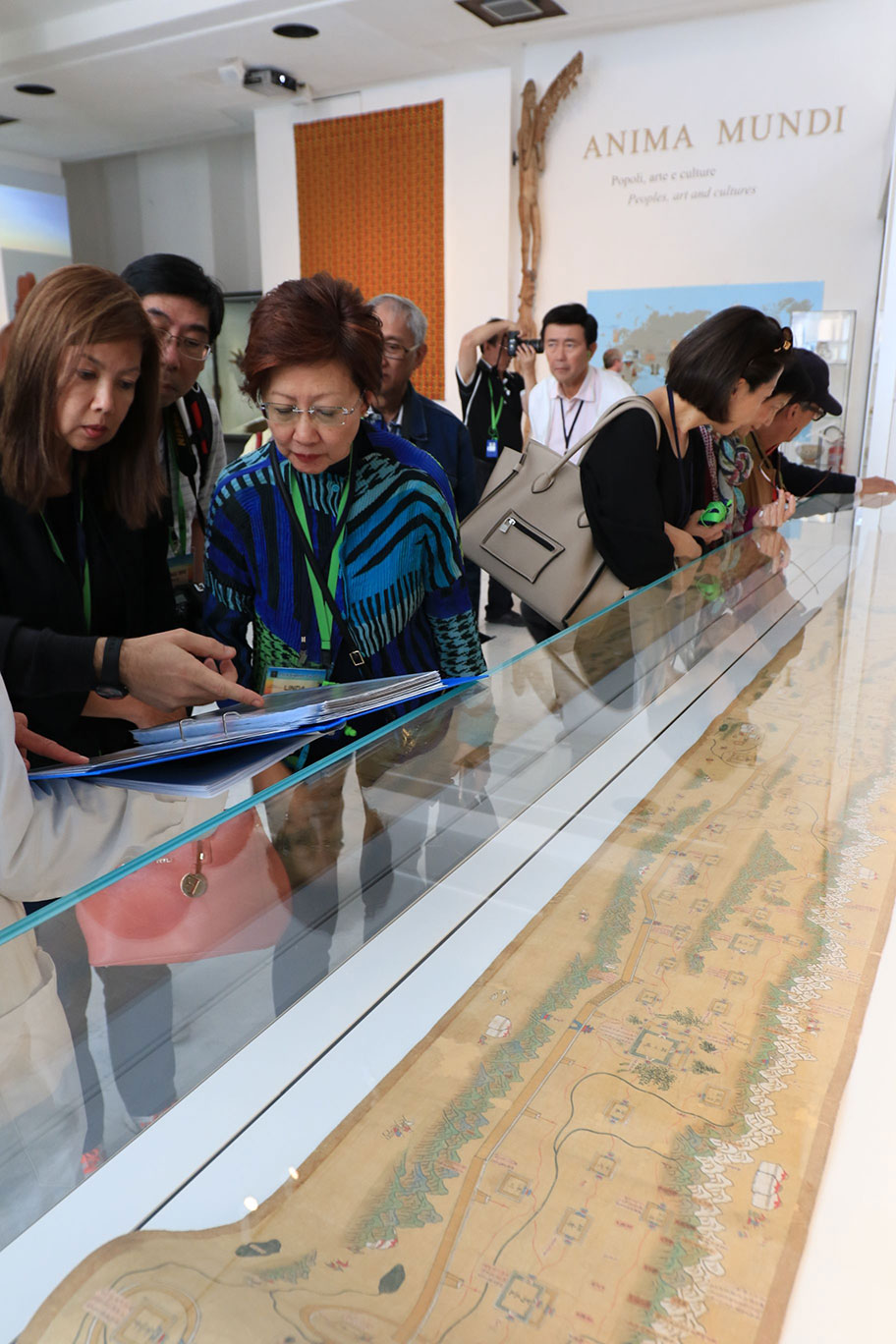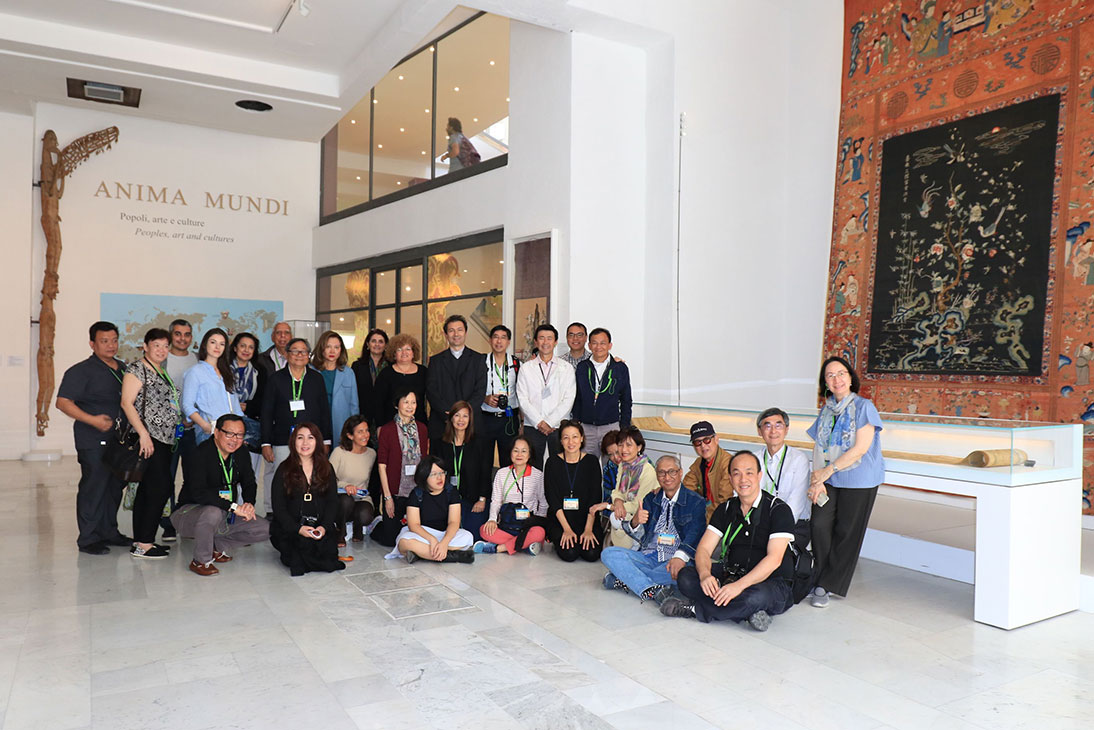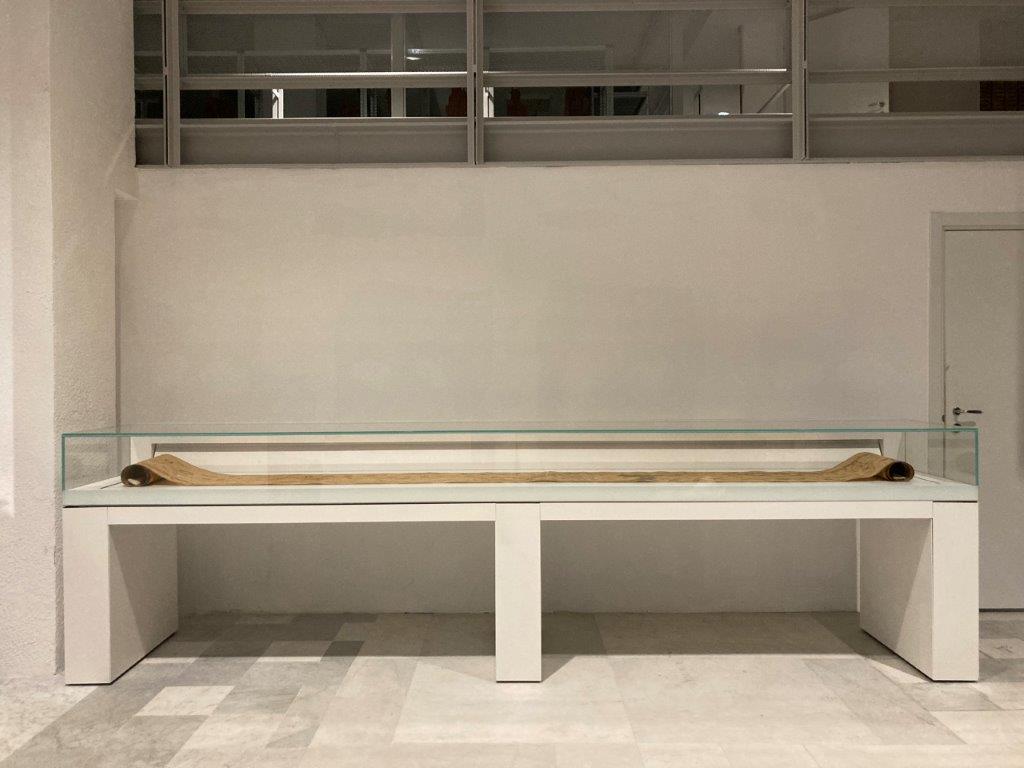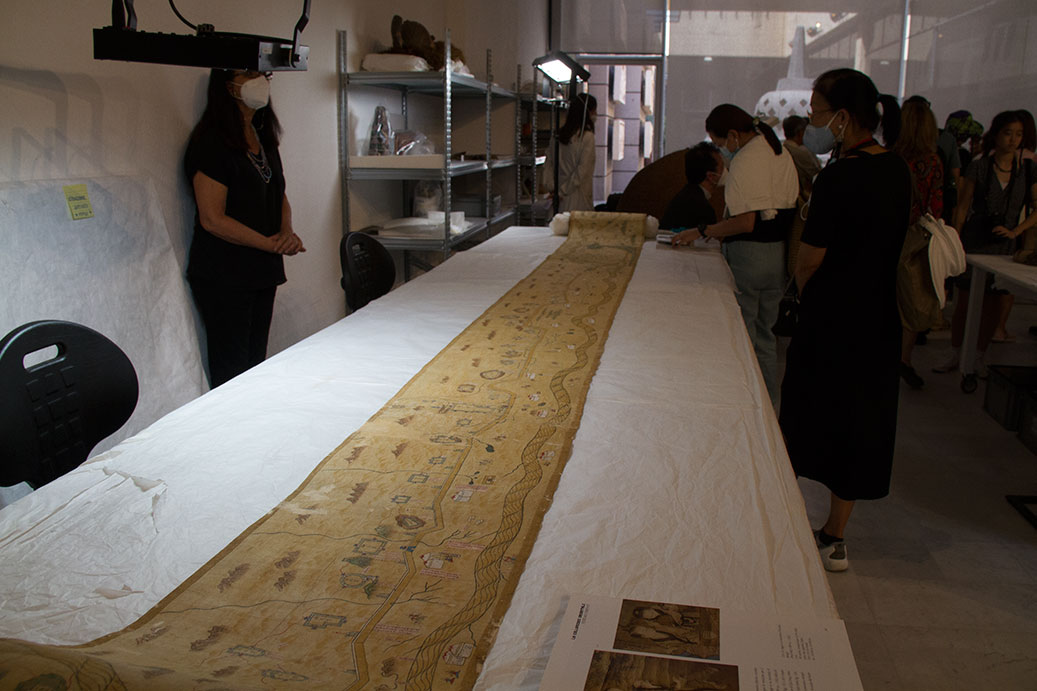The Great Wall of China has inspired many paintings, poems, operas, stories, and legends. Among them is the “Chinese horizontal painted scroll: The Great Wall of China” in the Anima Mundi Museum at the Vatican. The scroll, of which the artist is unknown, dates to the seventeenth century and is a detailed map depicting the Great Wall and the surrounding territory.
This long, horizontal scroll measures 38 by 775cm, and was once part of the collection of Cardinal Stefano Borgia as shown in the January 14, 1792 letter from the Cardinal. The scroll is a significant piece in the Vatican Museums’ collection because of its high empirical value and historical interest.
The work is a detailed geographical map featuring the Great Wall of China, cities, rivers, and encampments. The markings and captions provide researchers with a wealth of knowledge about the pictured territory. One interesting peculiarity of this piece is the orientation of the map: the north is on the lower part of the work according to Chinese cartographers. The scroll is a testimony of great documentary value and historical interest.
State of Preservation
The painted scroll is found in a decent state of conservation. The most serious damages are observed in the front of the work. The work is covered in deposits of glue and other invasive substances on the front and back. A few rust stains are also present. The work is lined with sheets of Japanese paper, which is browning and is deformed in some places with separations and fractures of parts of the original work. Numerous gaps and detachments of the pigment are evident. The storage of the scrolls, rolled-up for a long period of time, and the stiffening of the glue contributed to the damages, causing the formation of creases both on the work and on the cardboard support. Thermo hygrometric fluctuations in the environment where the scrolls were kept, natural deterioration of the adhesive used, and the prolonged exposure to light are all causes of the degradation.
Restoration Procedures
- Photographic and graphic documentation
- Analyses of images: fluorescence under ultraviolet light, infrared, false color
- Measurement of the surface pH
- Anoxic disinfestations
- Superficial dusting
- Dry cleaning
- Consolidation of the pigment with Jun-Funori adhesive at 1% water solution applied with brush
- Cleaning with humidity of the back
- De-acidification, if necessary
- Consolidation of the silk fibres
- Adhesion of the separations between silk and paper
- Suture of the tears
- Reinforcement of the abraded parts
- Reparation of the gaps in the paper
- Consolidation of the creases in the back
- Chromatic integration
- Smoothing between cartoons
